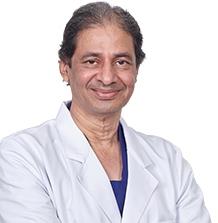| |
 Dr. Ashok RajgopalOrthopaedic SurgeonFortis Bone & Joint Institute, Delhi Healthy diet, regular exercise and most importantly early diagnosis are key
to tackle a debilitating musculoskeletal condition called Osteoporosis. It is a
common disorder characterised by inflammation of the joints.
Early diagnosis is extremely important so that people avail treatment at the
earliest before the problem worsens. As per the WHO, the prevalence of
osteoporosis varies between 0.3% and 1% and is more common in women and in
developed countries.
9.6% of men and 18% women aged over 60 years have symptomatic osteo-arthritis.
It tends to occur during the most productive years of adulthood, i.e., 20-40
years.
Padmashree Dr. Ashok Rajgopal, Chairman, Fortis Bone & Joint Institute shares
some quick insights on what contributes to healthy bones:
Symptoms of Osteoporosis:
Swelling of areas around joints
Pain (acute and otherwise) in different parts of the body
Crackling of joints
Decreased range of motion due to stiffness
Modifiable factors for healthy bones:
Diet: Diet should be rich in calcium and vitamin D. For adults
between the ages 20 to 50, 1000 mg of calcium and 600 units of vitamin D should
be consumed. Green leafy vegetables and fish are good sources of calcium.
Fortified milk and sunlight are good sources of vitamin D.
Physical Activity: Weight bearing exercises such as walking,
running and weight training help us in making our bones stronger.
Hormones: Hormonal disturbances affect bone health. Excess
thyroid, a deficiency of oestrogen (after menopause in females) or testosterone
(after the age of 70 in males) can lead to weakened bones.
Medicines: Steroids, cancer medication, anti-depressants,
anti-seizure drugs and proton pump inhibitors contribute to weakening of bones.
Smoking and Alcohol consumption tend to decrease bone density
at a faster rate. While smoking should be completely stopped, alcohol intake
should be limited to 2 drinks a week.
Non-modifiable factors for healthy bones:
Gender: Women are at greater risk of developing arthritis
because they have less bone tissue than men.
Body Structure: Thin people and people with a small body frame
also have a less bone mass to draw from as they age.
Genetics: Osteoporosis runs in families, so genetics do play a
strong role.
Pain management for Osteoporosis patients:
-Meditation and relaxation techniques help handle the pain psychologically
-Massage and acupuncture can soothe the joints and reduce pain
-Certain foods such as fried and processed meat, corn oil might increase
inflammation, it is advised to cut down on these foods
-Appropriate exercises such as low-impact aerobics, walking and physiotherapy
helps strengthen the bones and reduce pain
-Strengthening the muscles around the joint for added support
-Adequate sleep will ensure that the body is well-rested
-Stress reduction is essential to reduce chronic pain
-Using assistive devices
-Taking over-the-counter (OTC) pain relievers.
Bones provide structure to the human body, they protect organs, provide a base
for anchorage of muscles which help in locomotion. Bones are also a store house
of calcium.
Like any living organ, bones are continuously changing. New bone is laid upon
the older bone that is being broken down. By the age of 30 most people reach
their peak bone mass.
It is therefore advised that people start taking care of their bones in the
early years itself through healthy diet, regular exercise and a disciplined
lifestyle.
|


